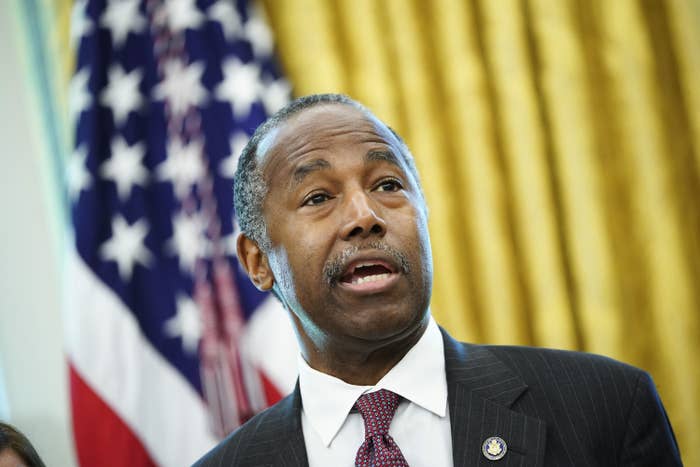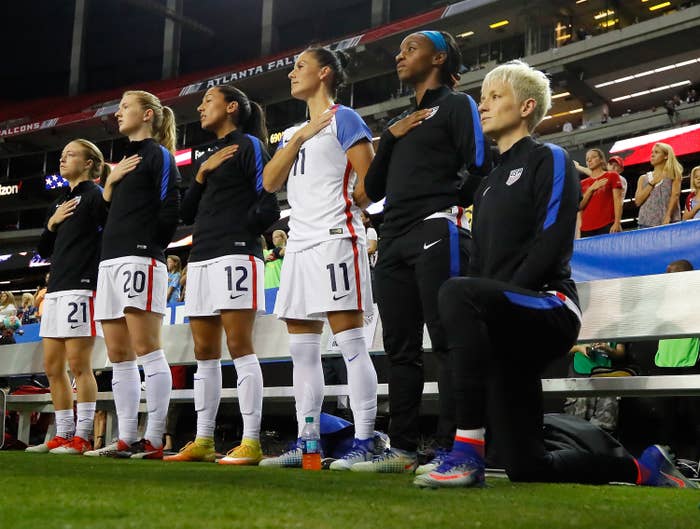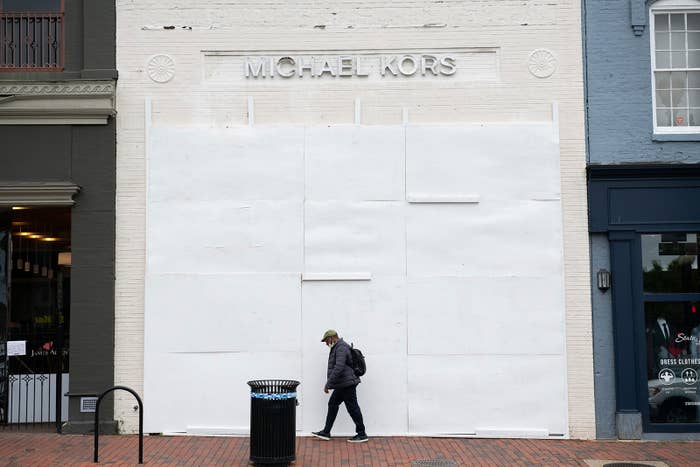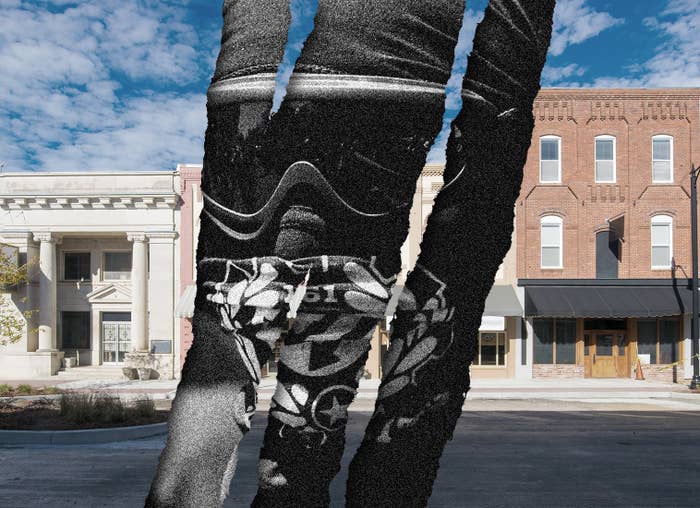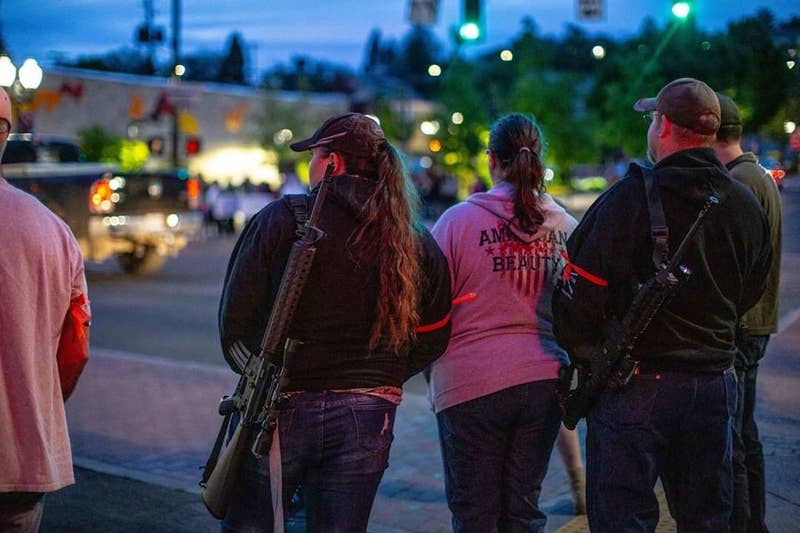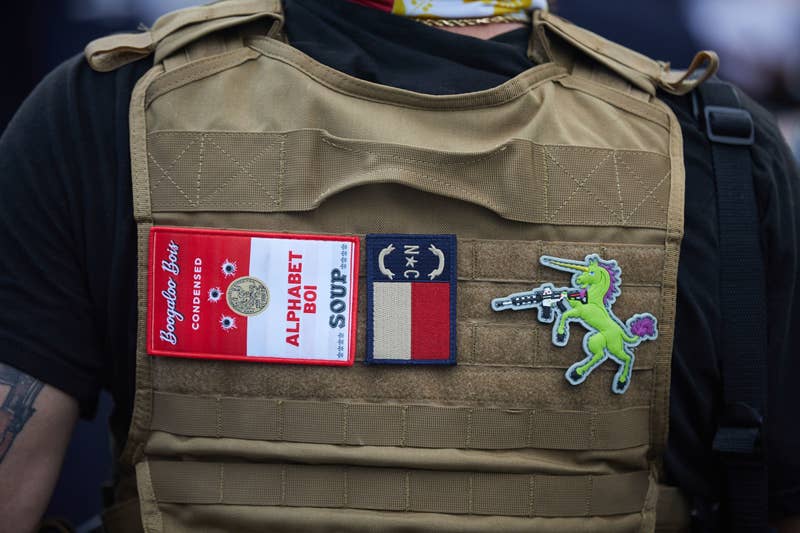
A man is detained by bicycle mounted police during a demonstration near the White House on June 1. Former Department of Justice officials are seeking an investigation of Attorney General William Barr's role in a move by police to clear protesters away from the White House later that day. Photo by Tasos Katopodis/UPI | License Photo
LOOKS LIKE THEY BUSTED YOUNG IAN ANDERSON OF JETHRO TULL
June 10 (UPI) -- Hundreds of former Justice Department employees on Wednesday called for a probe of Attorney General William Barr's involvement in a move by police to clear demonstrators from an area near the White House last week.
In a letter to Justice Department Inspector General Michael Horowitz, 1,250 department alumni -- many of them former career prosecutors, supervisors and trial lawyers -- urged the internal agency watchdog to look into Barr's role in a June 1 incident in which federal law enforcement officers used horses and tear gas to push a largely peaceful group of protesters back from Lafayette Square in Washington, D.C.
Also Wednesday, the DOJ Association of Black Attorneys issued a statement condemning retaliation or police-use-of force against peaceful protesters and calling for a return to more federal oversight of local police reform.
In the Lafayette Square incident, protesters who had gathered outside the White House to denounce the police-involved death of George Floyd were charged by U.S. Park Police officers firing rubber bullets and chemical gas.
June 10 (UPI) -- Hundreds of former Justice Department employees on Wednesday called for a probe of Attorney General William Barr's involvement in a move by police to clear demonstrators from an area near the White House last week.
In a letter to Justice Department Inspector General Michael Horowitz, 1,250 department alumni -- many of them former career prosecutors, supervisors and trial lawyers -- urged the internal agency watchdog to look into Barr's role in a June 1 incident in which federal law enforcement officers used horses and tear gas to push a largely peaceful group of protesters back from Lafayette Square in Washington, D.C.
Also Wednesday, the DOJ Association of Black Attorneys issued a statement condemning retaliation or police-use-of force against peaceful protesters and calling for a return to more federal oversight of local police reform.
In the Lafayette Square incident, protesters who had gathered outside the White House to denounce the police-involved death of George Floyd were charged by U.S. Park Police officers firing rubber bullets and chemical gas.
RELATED House Democrats unveil reform bill against police misconduct
The show of force came shortly after President Donald Trump threatened to mobilize thousands of active U.S. military members against demonstrators.
The purpose of the police action, the Justice Department alumni wrote, was to enable Trump "to walk across the street from the White House and stage a photo op at St. John's Church, a politically motivated event in which Attorney General Barr participated."
"While the full scope of the Attorney General's role is not yet clear, he has admitted that he was present in front of the White House before law enforcement personnel took action to disperse the crowd," they wrote.
The show of force came shortly after President Donald Trump threatened to mobilize thousands of active U.S. military members against demonstrators.
The purpose of the police action, the Justice Department alumni wrote, was to enable Trump "to walk across the street from the White House and stage a photo op at St. John's Church, a politically motivated event in which Attorney General Barr participated."
"While the full scope of the Attorney General's role is not yet clear, he has admitted that he was present in front of the White House before law enforcement personnel took action to disperse the crowd," they wrote.
RELATED ACLU sues Trump, Barr over 'criminal attack' on Lafayette Square protesters
Barr has denied giving the "tactical order" for the Park Police to charge the demonstrators, but White House and Justice Department officials confirmed Barr had personally ordered the execution of a plan devised earlier in the day to push the crowds back following incidences of vandalism the previous night.
Trump has faced criticism from Washington, D.C., Mayor Muriel Bowser, other prominent Democrats and military officials over the incident. Pentagon adviser James Miller resigned in protest over Defense Secretary Mike Esper's involvement in the police move.
The DOJ Association of Black Attorneys condemned using federal law enforcement agencies to employ unnecessary force against protesters and to strengthen federal oversight of local police reform.
RELATED Pelosi asks for full ID of all police, forces responding to D.C. protests
"George Floyd's death reminds us yet again that the ongoing inequitable treatment of Black Americans demands structural and systemic improvements within the American justice system," the group wrote.
"This country's history of racial violence and intimidation as well as pervasive implicit bias still permeates cities, towns, local police forces, prosecutors' offices, and the day-to-day interactions of all Americans. DOJABA will not be silent.
"For DOJABA members, it does not take harrowing images or painful videos to imagine the same fate," the statement said.
"Incidents like George Floyd's murder reinforce the constant fear that we-or our loved ones-will experience such horror while going to the store, sitting in one's home, or jogging."
The group's statement, which was supported by other DOJ employee organizations, urged that the DOJ return to a tradition of stepping in with local police reform agreements addressing the use of force and discriminatory policing, which have been de-emphasized in the Trump administration, first under Attorney General Jeff Sessions and later under William Barr.
"We strongly encourage the prosecution of law enforcement officers who blatantly disregard the Constitutional rights of Black Americans to the fullest extent possible under federal law," the group said.
Protesters demand justice in police killing of George Floyd

Protesters gather in Washington Square Park in New York City on June 9. Photo by John Angelillo/UPI | License Photo
MASKED SOCIAL DISTANCING FOR SOCIAL JUSTICE UNLIKE
THE ARMED WHITE PROTESTERS AGAINST COVID-19 RULES







